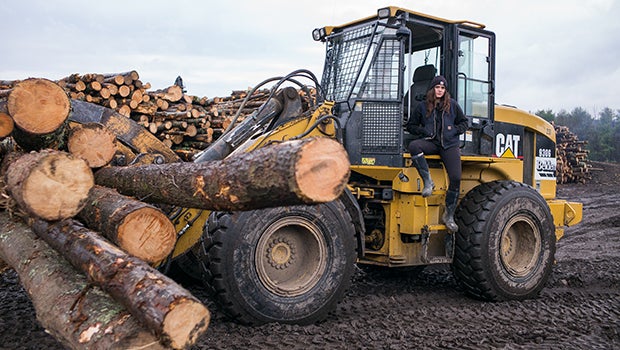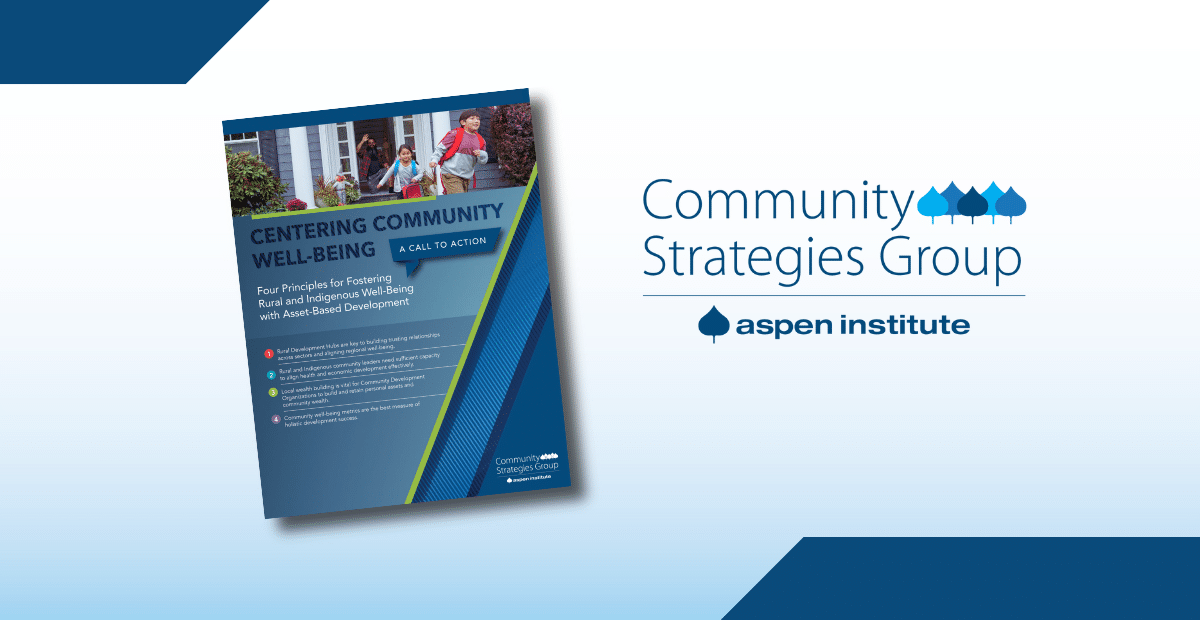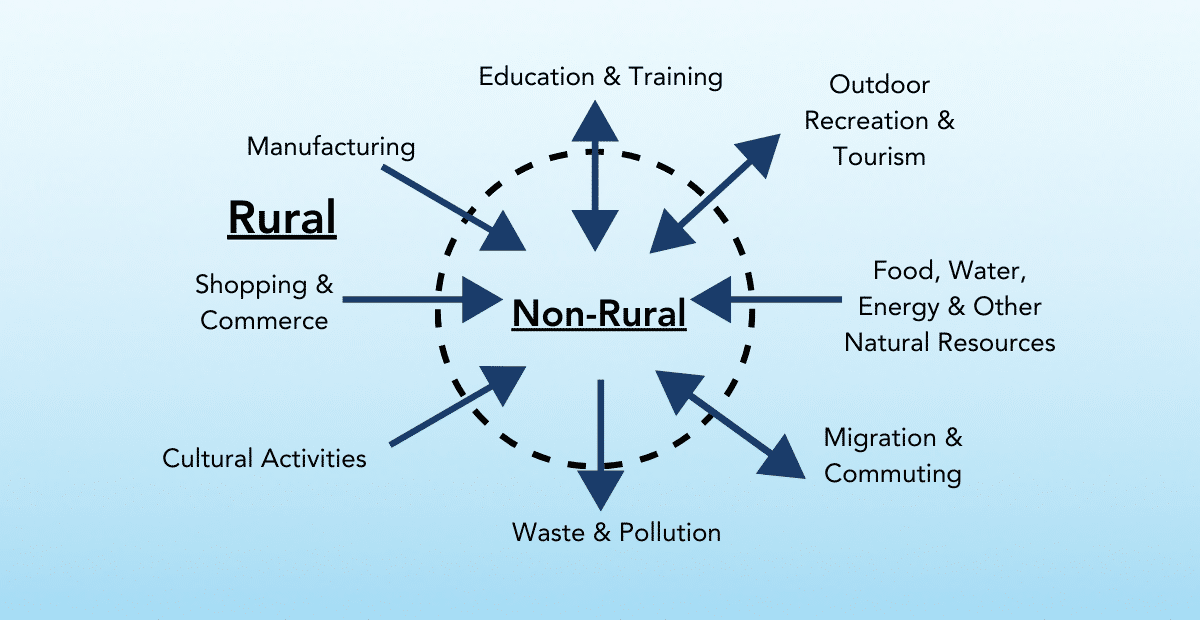A recent New York Times article detailed the climate-related pros and cons of using wood pellets for heating in the Southeast United States, along with the rural development and environmental justice costs and benefits of that region’s wood-pellet industry. Aspen CSG knows from its 35 years of work across the nation that rural America is not a monolith – and that economies, assets, cultures, populations and solutions vary widely across the nation. These regional differences matter. To understand the reality of a different region, we offer the perspective of Rob Riley, CEO of the Northern Forest Center.
In the Northeast, where snow regularly falls into late April, heating our homes and buildings accounts for 40.3 million tons a year of carbon dioxide emissions from more than 3.6 billion gallons of heating oil — not to mention the other fossil fuels used for heat.
With President Biden’s announcement of the goal to cut greenhouse gas emissions by more than 52% by 2030 comes a call to action that will impact the daily lives of every American. Immediately, some people thought of restrictions, upheaval, and a significant price tag.
Instead, we see an opportunity to address our region’s addiction to oil and put in place a climate-smart approach — one that is regionally appropriate, can have an immediate and cross-cutting impact on climate and community, and is ready for sustainable implementation.
Without doubt, our first responsibility is to reduce the amount of heat we use through increased energy efficiency measures. Second, we must reconsider the fuels we use and apply an all-renewables approach in this region, including a central role for modern wood heat. This is not an old wood stove, an outdoor wood furnace, or a wood electric plant; this is high-efficiency central heating that meets all EPA and state standards for particulate matter.
In the Northern Forest, we sustainably harvest timber as part of integrated forest management and use sawmill waste to create solid wood fuel that is delivered to homes just as oil and propane are. But, instead of contributing to the problem, modern wood heat reduces net carbon dioxide emissions by more than 50%.
Instead of contributing to the problem, modern wood heat reduces net carbon dioxide emissions by more than 50%.
It’s not intuitive that using wood for heat can reduce emissions. The explanation is complex, but it’s been tested and proven to be true here in the Northern Forest. When wood fuels harvested and manufactured in the Northern Forest are used instead of fossil fuels to heat buildings here, there is an immediate net carbon emissions reduction of 54% compared to oil and 59% compared to natural gas, according to independent, peer-reviewed lifecycle analysis.
And — crucial to overcoming economic and social barriers to reducing emissions — modern wood heat also delivers high-quality jobs, cost savings, and other desirable community benefits.
Place matters in determining the impacts of our energy decisions. Stretching from Maine to New York, the 30-million-acre Northern Forest is the largest contiguous forest in the East and is predominantly privately owned. It has been actively managed for multiple forest products — timber, paper, energy, carbon — for well over a century, and yet it stands and is even expanding today. Currently, growth in the region’s forest exceeds harvest by more than 2:1; the forest can sequester massive amounts of carbon while also providing products that lessen our use of fossil fuels and other non-renewable materials.
Historic uses of the forest have changed. Many of the region’s paper mills that produced supplies for phone books, newspapers and magazines have closed. Some remain but require a smaller portion of the wood supply. The Northern Forest can provide, by one estimate, 20% of the Northeast’s space heating needs without cutting a single additional tree beyond historical levels. We have the capacity to reduce carbon emissions from oil heating here by more than 4.4 million tons annually with no further impact on the forest.
Forests are huge carbon sinks, critical to combating climate change. In the Northern Forest, modern wood heat supports forest stewardship that allows private landowners to keep growing trees and deliver carbon benefits along with clean water, outdoor recreation, and local jobs. It’s these multiple benefits that make modern wood heat so compelling. Rural people and communities don’t need to be looked down upon for their legacy natural resource economies. Instead, they can be embraced as stewards of the landscape — and part of the solution.
Rural people and communities don’t need to be looked down upon for their legacy natural resource economies. Instead, they can be embraced as stewards of the landscape — and part of the solution.
The case for wood heat may not make sense elsewhere, but it does in the Northern Forest. A climate-friendly solution for our need to heat is growing all around us. Through relatively modest federal investments in the wood heating sector and incentives like the new federal tax credit for modern wood heating appliances, this region can deliver its share of carbon reductions while also supporting vibrant rural communities and continuing to grow the forest that defines them.
This commentary is by Rob Riley, president of the Northern Forest Center, a regional innovation and investment partner that creates rural vibrancy across New York, Vermont, New Hampshire and Maine. The center co-founded the national Rural Development Innovation Group with the Aspen Institute Community Strategies Group and the U.S. Endowment for Forestry & Communities. This blog originally appeared as a guest commentary in VT Digger, Portland Press Herald and Adirondack Daily Enterprise.
Photo by Greg Comollo, courtesy of the Northern Forest Center.







